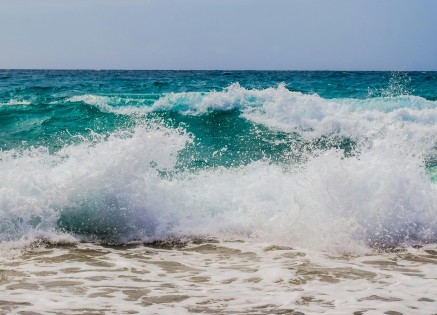Copyright © 2025 lmitac.com All Rights Reserved. Contact - Terms and Conditions - Privacy Policy - Quality Policy - Become an instructor - Vacancies - Sitemap
London Maritime Academy is a trade name for London Premier Groupversion: 2.9.0
London Maritime Academy is a trade name for London Premier Group

Posted on : 5/25/2025, 10:15:59 PM
The IMO and its committees are making amazing efforts to reduce emissions and boost sustainability, and the concept of shore power is one of the most effective efforts.
Furthermore, shore power gives ships at berth the needed electrical plug and energy grid connection to keep required engines, systems, and equipment working effectively at the dock without diesel fuel.
Today, we will share with you updated information about shore power systems and solutions, key global standards based on IMO electrical connection regulations, and electrical power to a ship at berth benefits to all included parties.
Shore power refers to the process of providing an electrical power source for ships, yachts, or vessels at berth, in a way that allows them to use needed systems at port, run heavy machines, and keep services quality for all products onboard without starting fuel engines and generators.
Moreover, the shore bower electricity delivery allows a vessel or boat to run its external and internal lights, container refrigeration systems, running AC suits, and many other needed machines in a stable and safe volt.
Cold ironing, alternative maritime power (AMP), or shore power solutions are all guided and developed based on the Sub-Committee on Ship Systems and Equipment (SSE), to operate the shore supply to vessels at ports. Based on the standardized electrical connection between the port and the ship.
Typically, the sustainable shore power electrical systems reduce a docked ship's fuel consumption and encourage the use of sustainable functions, cords and accessories, batteries and electronics, and solutions like Hydrogen fuel cells in any installed shoreside infrastructure.
All these main standards follow the IMO and its committees regulations in all the details regarding operating electrical power systems from port to vessel:
There are many international standards to follow regarding the shore power system to ensure safety, reliable electrical connections, and voltage compatibility, like IEC/ISO/IEEE 80005.
This public standard delivers an innovative solution to any problem, allowing better technology, shore power supplying service, and all other items for all boaters.
All the electrical and mechanical systems used in shore power setup including electrical plug connections, lifting and winch equipment, pumps, and chargers must be properly rated, maintained, and updated based on safety standards.
The complete concept of port-to-ship shore power is to protect people's lives and health, and the marine environment from different emissions coming from the maritime industry, with better air quality and noise rates.
On the other hand, based on international regulations, safety protocols, and procedures also must be followed regarding electrical plugs and power delivery in the shore power.
Updated fire prevention systems and materials must be used in the shore power systems to deliver electricity to vessels based on marine electrical safety standards and fire suppression codes.
So, cables, connectors, plug structures, and all located systems in the energy grid supply between shore and ship must be flame-retardant to avoid overheating and fire starting.
Compliance with IMO Guidelines, including IMO MARPOL Annex VI, will help ships and vessels not only meet global marine environmental goals in air pollution and greenhouse gas emissions. But also helps ships avoid penalties and restrictions on the international level.

According to the maritime engineering courses in London, there are many incredible benefits attached to the usage and implementation of electrical shore power to a ship at berth, like:
When ships shut down engines at port, this will reduce harmful pollutants leading to cleaner air in the port and its surrounding areas.
The use of shore power will help ships function as needed when berthing while reducing emissions due to engines stopping and following environmental regulations.
Many recent studies indicate the dangerous impact of noise pollution, thus, the shore electrical power will help in reducing engine noise and vibrations. With lower noise levels all workers and close residents will feel better.
The shore power is a great step to provide ships with needed electrical power or source while following sustainability regulations.
If you are interested in taking your marine business to the next level you should invest in shore power plug systems in your ship or vessel based on the latest advanced engineering standards.
Shore power—also called cold ironing or Alternative Maritime Power (AMP)—refers to the process of supplying electricity to a ship from shore while it is docked at port. This allows the ship to turn off its diesel engines and still operate essential systems like lights, HVAC, and refrigerated containers.
Shore power significantly reduces air pollution, greenhouse gas emissions, and noise pollution by allowing ships to stop using auxiliary engines while at berth. It directly supports compliance with IMO MARPOL Annex VI, which regulates ship emissions worldwide.
The main standard is IEC/ISO/IEEE 80005, which governs the design, installation, testing, and operation of high-voltage shore connection systems. These standards ensure safety, compatibility, and energy efficiency for both ports and vessels.
Not yet, but more ports are requiring it, especially in Emission Control Areas (ECAs) and major global ports like Los Angeles, Rotterdam, and Singapore. New ships are increasingly designed with shore power interfaces, and retrofitting older vessels is becoming a priority.
The IMO promotes shore power as a tool to help the shipping sector meet carbon reduction and air quality goals. It plays a key role in strategies under MARPOL Annex VI, GHG reduction plans, and port sustainability initiatives endorsed by the IMO’s Sub-Committee on Ship Systems and Equipment (SSE).